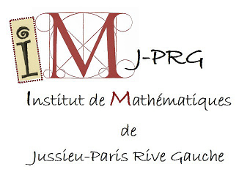| Résume | The first notion of definable (topological) compactness within o-minimality was introduced in the late 1990s by K. Peterzil and C. Steinhorn for definable manifold spaces (e.g. definable groups). This is the property that every definable curve converges (onwards curve-compactness). Its study was motivated by the fact that it played a crucial role in the formulation of Pillay's conjecture about definable groups. In the 2000s the investigation of o-minimal forking led to an equivalent characterization of definable compactness: for every definable family of closed sets with the finite intersection property there exists a finite set that intersects each set in the family. The equivalence with a third notion, that of having fsg (finitely satisfiable generics), was also observed. In the 2010s E. Hrushovski and F. Loeser adapted curve-compactness to the valued field setting by considering the property that every definable type converges. Furthermore, authors such as A. Fornasiero and W. Johnson started exploring yet another notion of definable compactness: every definable filter of closed sets has non-empty intersection. In this talk we discuss the relationship between all these definitions in various NIP settings (including o-minimal, p-adic and distal dp-minimal). We present the current literature, open questions, and the model theory behind characterizing definable compactness. |

